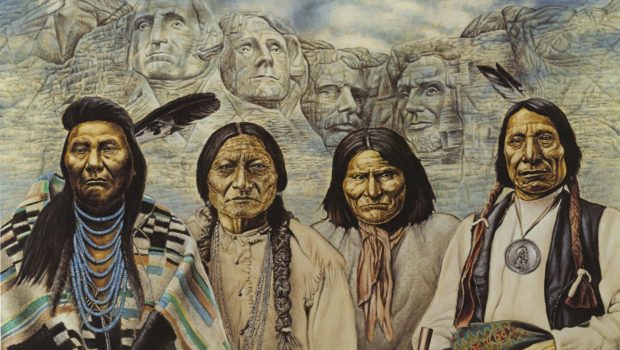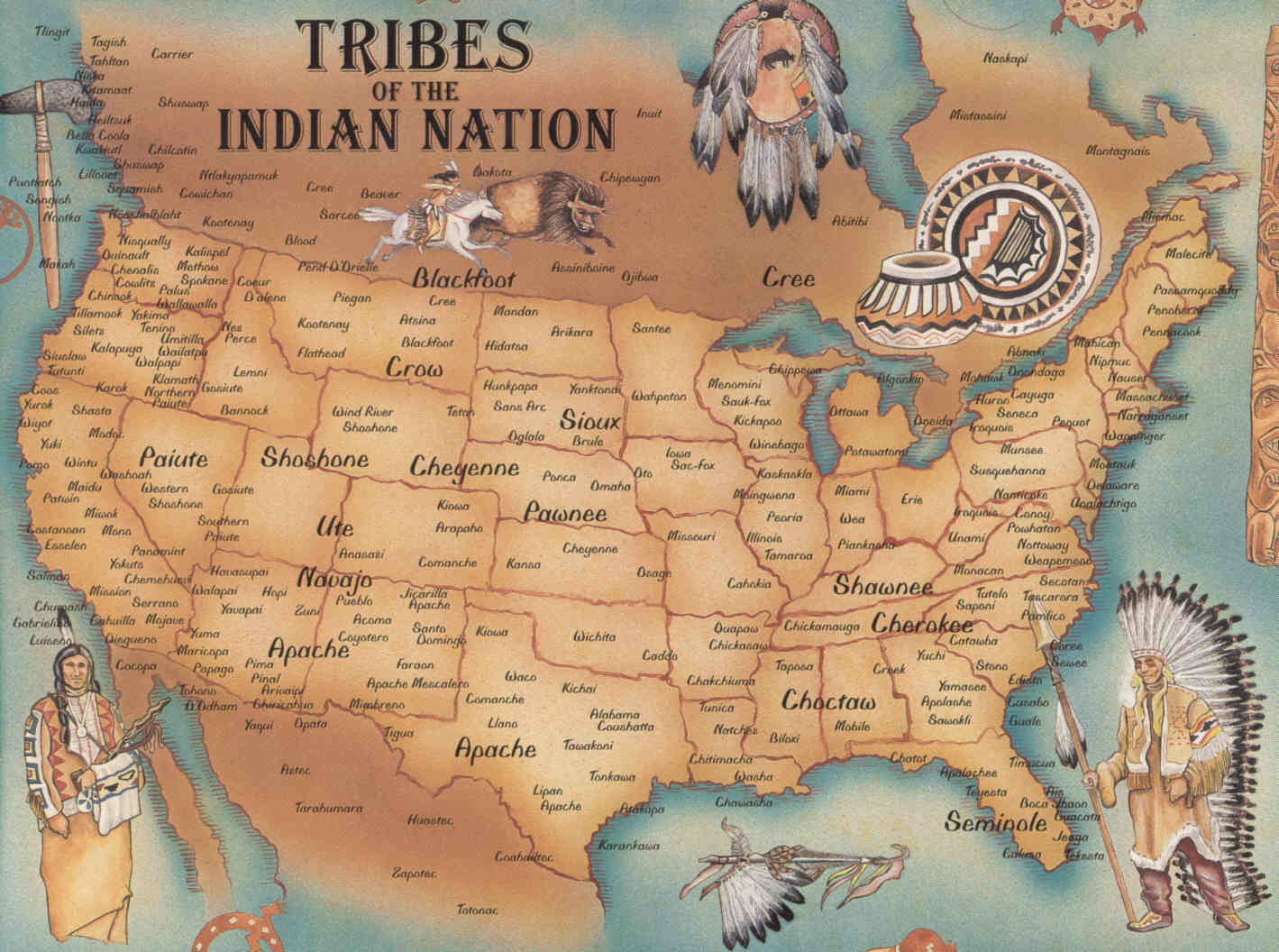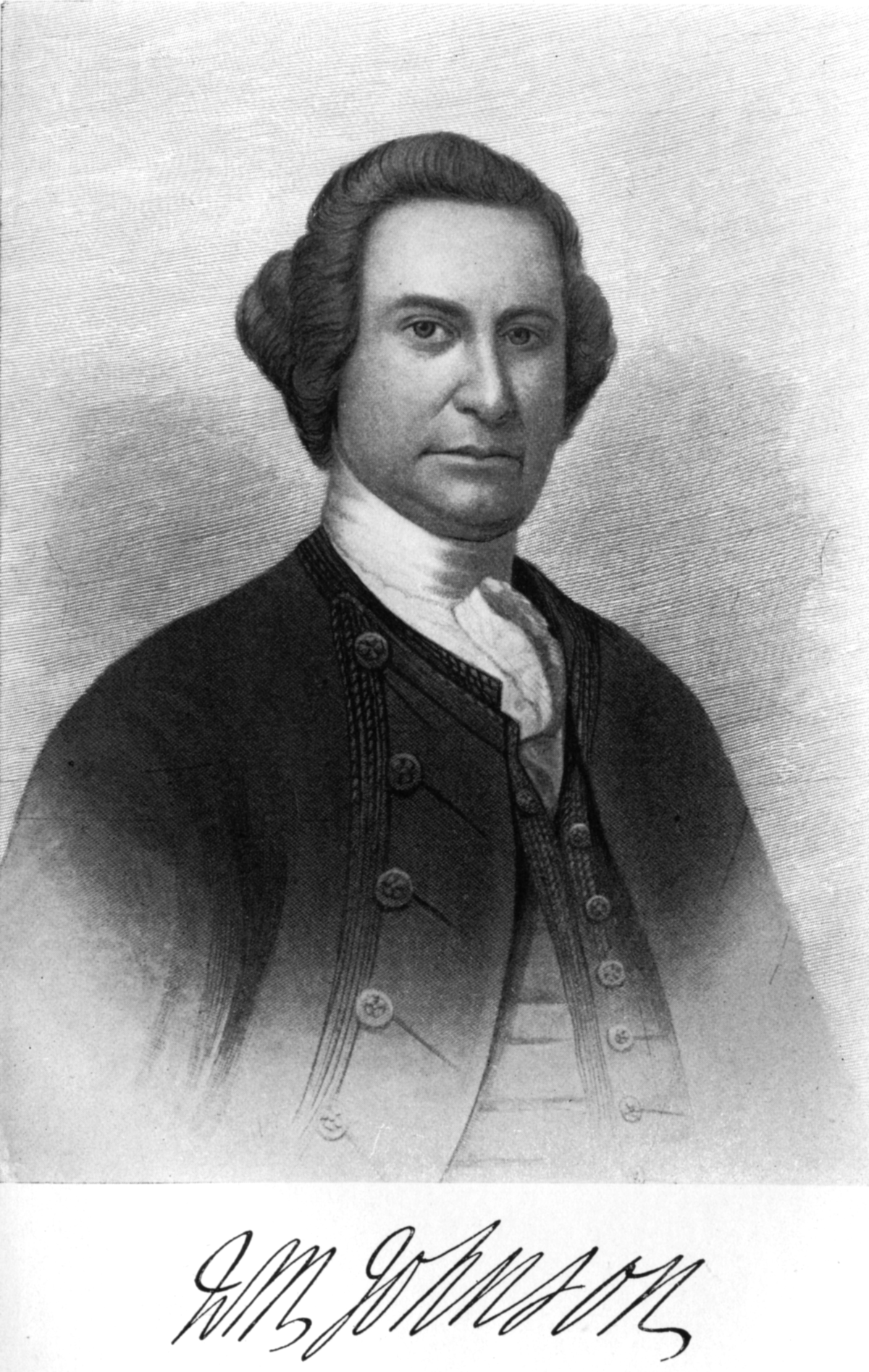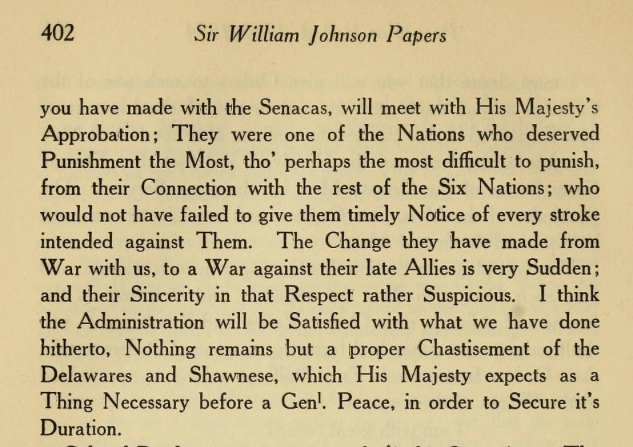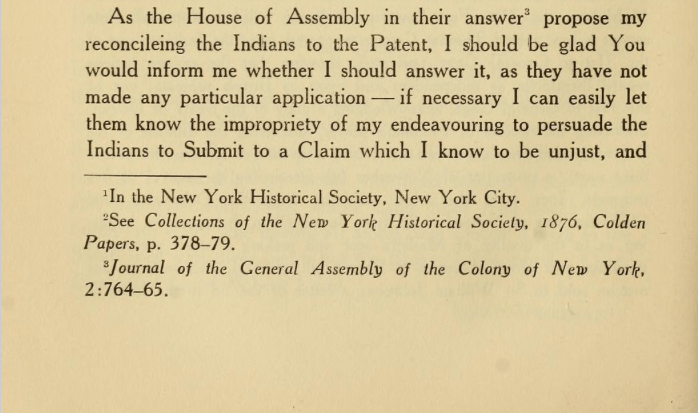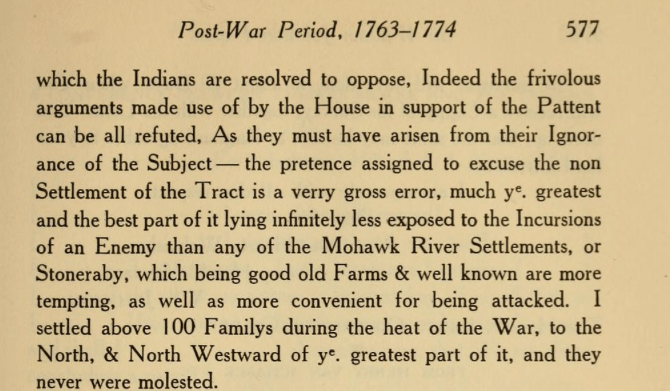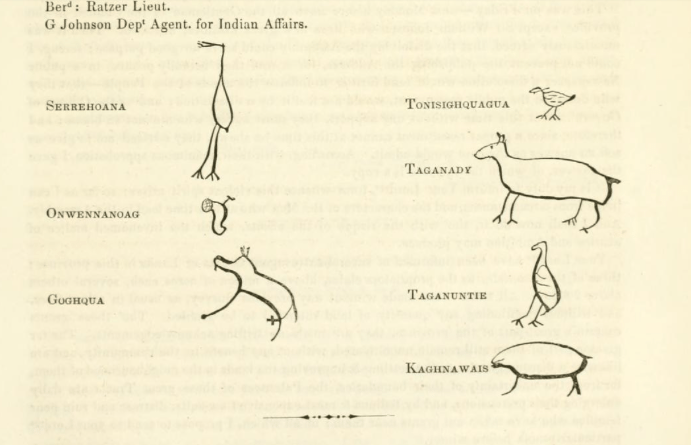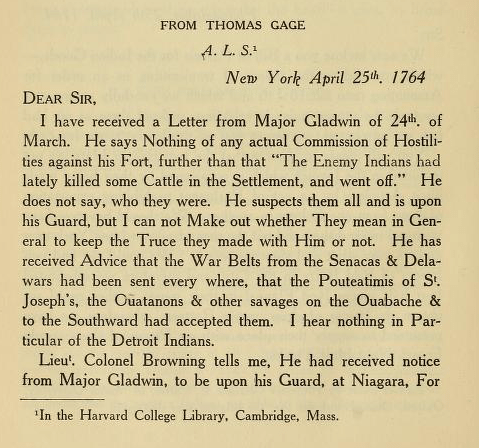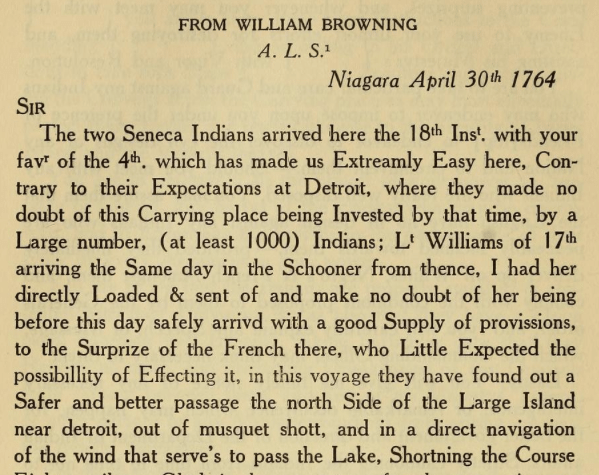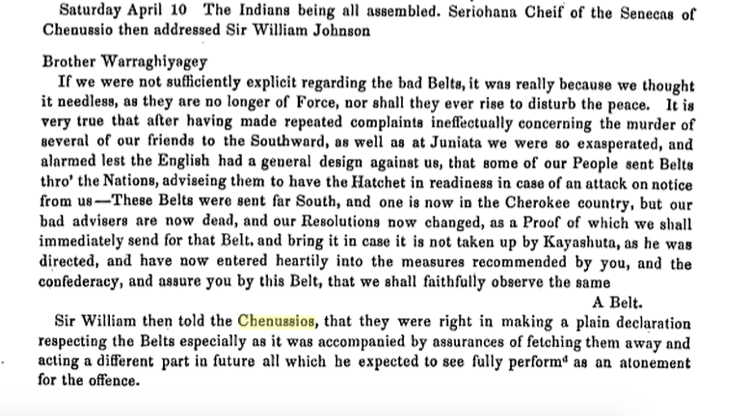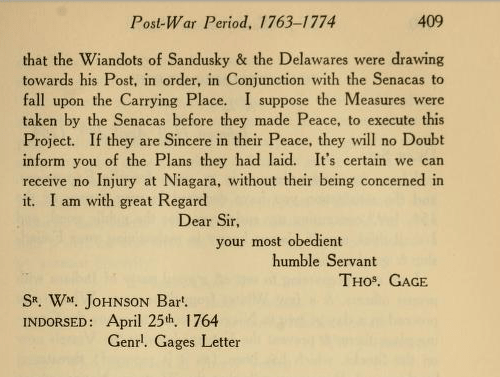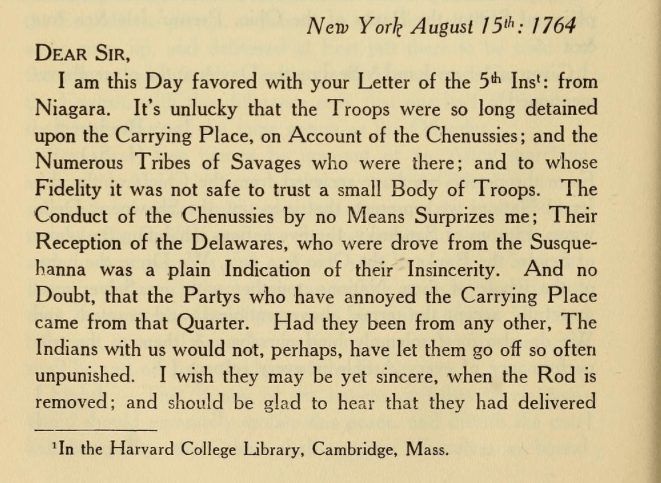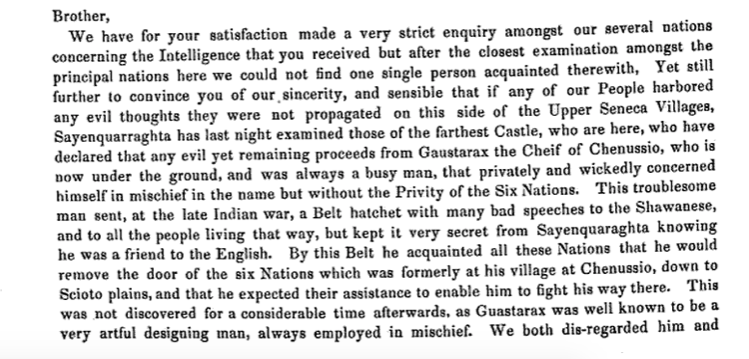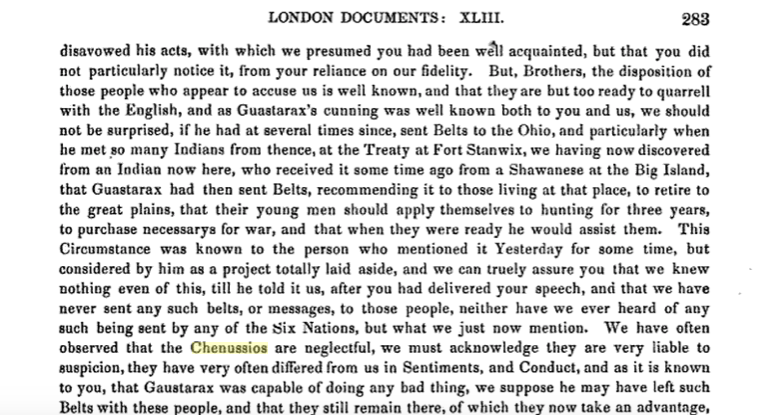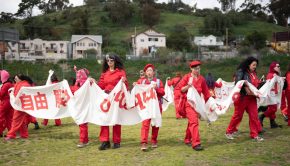A Fresh Look At Seneca History
*Author’s Note: While I understand that the image at the top of this article includes Chief Joseph, Sitting Bull, Geronimo and Quanah Parker, none of whom are Seneca, I found the image to be visually striking and it strongly illustrates the rhetoric. The use of this image, created by David Behrens, is purely an artistic decision to illustrate a point: That the current social climate reflects a dynamic turn in our nation’s history. The four men pictured above are nonetheless great Native American leaders who suffered oppression similar to that which is outlined below.
The current narrative between New York State and the Seneca Nation in regards to the casino gaming compact has sparked my curiosity and led to the theory which is the main subject of this report. The Haudenosaunee, more often referred to as the Iroquois Confederacy or the Six Nations, have always held my respect as a Niagarian. It is a fact that the United States Constitution was based on the structure and organization of the Iroquois Confederacy. I took it upon myself to conduct my own research, and what I found is something that has shaped the history of our country. Sources are included at the bottom of this report. As the Seneca Nation and New York State prepare for arbitration, let us look at history from a new perspective:
In 1993, the Seneca Nation attempted to claim Grand Island, NY as it was once part of their territory. In 2002, the case came to an end, against the favor of the Seneca Nation. After much deliberation, the judge’s ultimate decision in the case was based solely upon a treaty that was signed August 6th, 1764. This treaty, known as the Treaty of Peace, was a revised version of an earlier treaty signed in April of 1764. The mastermind behind the treaties was Sir William Johnson, an infamous general in the King’s army. Johnson was Superintendent of Indian Affairs and had it not been for his forked tongue and charisma, Chief Pontiac’s rebellion would likely have succeeded against the British invaders.
The Treaty of Peace (1764), also called the Treaty of Fort Niagara, is sometimes referred to as the “Magna Carta” of Indian treaties. Over 2,000 Native Americans were present at the April gathering. At the time of the gathering, indigenous people of Turtle Island were well organized and their civilizations were highly developed. The Six Nations were among the most powerful of the tribes spanning the continent, with the Seneca Nation (Chenussio) being the most powerful of the six. The Chenussio (Geneseo) Indians were despised by the British; Johnson’s own sentiments being of no exception. They refused to bend the knee to the Crown, and swore to never make peace with the British. They were fearless warriors and on September 14th, 1763, they slaughtered a British caravan and murdered over 100 people in what is now known as the “Devil’s Hole Massacre.” This event took place only a few miles from Fort Niagara, where the treaty was signed.
SIR WILLIAM JOHNSON’S FORKED TONGUE
Sir William Johnson was directly in charge of all Indian Affairs at the time of the treaty being signed. Strategically, he sent an army led by one Colonel Bradstreet to Detroit to put up opposition against Chief Pontiac and the Delaware Indians. Also with Pontiac were the Chenussios, who chose the rebellion over peace. Now, it must be known that in 1764, the indigenous tribes of Turtle Island were winning the war against the British. Assisted in some small part by the French, the highly coordinated Indian attacks were causing great distress to His Majesty’s armies. The British were unable to move through wooded areas without assistance from Indian guides… and most of the British occupied region of North America was covered in woodlands. In 1764, Johnson was holding down what would be the last of the Northern foothold for the British. Had the natives known that they were so close to defeating the British, it is highly unlikely that any treaty would have been signed. Johnson, a cunning military strategist, had to act quickly. The 1763 massacre in the Niagara Gorge was alarming, and showed that the Seneca/Chenussio were capable of taking Fort Niagara, which was located in Seneca territory. If the British lost Fort Niagara, it would have destroyed their foothold of the portage at Niagara.
So Johnson devised a plan, a Treaty of Peace, and he used his Indian connections to invite virtually every tribe from North America to the gathering. The Sioux did not show, but they were forgiven as their distance from the Carrying Place was taken into consideration. The Delaware were obviously not present as Pontiac’s rebellion raged on. Johnson’s main concern was with the Seneca Nation, who he knew could sway the other five nations (and as such, many other indigenous nations), and bend them to their will. According to Johnson’s correspondence with his colleagues, it’s clear that no other nation gave the British a run for their money like the Chenussios.
In April of 1764, when thousands of Native Americans gathered to meet Sir William Johnson at Fort Niagara, the Seneca Nation sent two runners. These runners informed the British that the Chenussios were still standing by Chief Pontiac, but they were open to peace talks in July. Johnson was delighted with the news, as he believed he would have to take up arms in a bloody string of skirmishes against the Seneca Nation and he could now rest easy knowing that his plan would prevent violence with the Chenussios. His colleagues warned him not to trust the Chenussios or their word, but Johnson was convinced of his own abilities to deceive and control Native Americans. The April treaty was signed by the Senecas and much of the land of Niagara was given at this time to the British. The islands of the Niagara River were exempted from the agreement, and as Peter Porter has it in his History of Goat Island, NY (1900): “The diplomatic Senecas specially excepted from this grant all the islands in the river.”
THE AX: CHENUSSIO COVERT OPERATION
What follows is where history may have been re-written. What exists of historical record are mostly letters, journals and transcripts from the British. What can be determined with utmost certainty is that the Chenussios were planning a covert ambush of the British. According to a Shawanese informant on June 20th, 1774 in the presence of Sir William Johnson at Johnson Hall; the Chenussios had been sending out “bad belts” for years (prior to the 1764 treaty), meant to rally all other native nations to war against the British. According to this informant: The plan had always been, since the British had arrived, to trap the British all in one place (at Scioto) and dispel of them in one strategic ambush. The Chenussios were orchestrating the ambush and it coincided perfectly with Chief Pontiac’s war, ten years earlier. This can be seen by the Chenussios response to this information, as they say the main instigator in this plan was Chief Gaustarax, whom they claimed was dead at the time (1774). Little is known of Gaustarax, though it is believed that he led the Chenussios in the Battle of Bushy Run (1763). Bushy Run took place in August, just one month prior to the Devil’s Hole Massacre, and as such it is almost certain that Gaustarax was in charge of the Chenussio led ambush, which was in turn a part of Pontiac’s Rebellion. In 1774, at Johnson Hall, the Chenussios blamed Gaustarax, saying that he caused all of the trouble that the British had experienced. He was the perfect scapegoat. He was already dead and couldn’t be reprimanded, and it spared any further punishment for the Chenussios as Johnson accepted their excuse.
Further proof that the Chenussios were misleading the British into a grand ambush are found in Sir William Johnson’s letters. In a letter addressed to Johnson, written by Thomas Gage and dated April 25th, 1764; “He has received Advice that the War Belts from the Senecas and Delawares had been sent every where, that the Pouteatimis of St. Joseph’s, the Ouatanons & other savages on the Ouabache & to the Southward had accepted them…. I suppose the Measures were taken by the Senecas before they made Peace, to execute this Project. If they are Sincere in their Peace, they will no Doubt inform you of the Plans they had laid. It’s certain we can receive no Injury at Niagara, without their being concerned in it.”
Interestingly enough, extensive research resulted in no findings from Sir William Johnson’s letters or any other historical text where the Chenussios revealed these war plans directly to Johnson before, during or immediately after the August 1764 Treaty of Peace. The closest testimony from the Chenussios themselves, including the admittance of the war belts is the 1774 meeting at Johnson Hall; and it was only after the Shawanese informant outed the Chenussios and their plan that they admitted it was Chief Guastarax (also known as Oscotax or Mud Eater). Thus it can at least be assumed that the Chenussios were insincere in their engagements with Sir William Johnson in 1764, as they were attempting to bait the British into a massive ambush known as The Ax.
text where the Chenussios revealed these war plans directly to Johnson before, during or immediately after the August 1764 Treaty of Peace. The closest testimony from the Chenussios themselves, including the admittance of the war belts is the 1774 meeting at Johnson Hall; and it was only after the Shawanese informant outed the Chenussios and their plan that they admitted it was Chief Guastarax (also known as Oscotax or Mud Eater). Thus it can at least be assumed that the Chenussios were insincere in their engagements with Sir William Johnson in 1764, as they were attempting to bait the British into a massive ambush known as The Ax.
To explore this even further, here is a testimony from Thomas King (October 3rd, 1764) , “Pontiac seemed to be very [ ] to see the Chiefs from the Six Nations, as he understood that [ ] were the Occasion of the War, having received Belts from the Seneca[s] for carrying on the War, during the Congress held at Niagara; The reason he had struck was owing to his having thought the Six Nations had continued in carrying on the War, from the Belts he had received from Jennesu, sent him by the Senecas, that he should take care for the future how he should be so deceived.”
Even with the words missing from the transcript, it’s clear that Pontiac was in on the covert plan and awaiting a response from the Chenussios at Niagara. It gets even better, as King goes on to describe the belts that were being carried by the Twightwees: “The Twightwees produced 15 Belts and 5 Strings of Wampum & spoke as follows. These 15 Belts and 5 Strings arrived Three days ago from the Senecas, in the Name of the Six Nations, who exhort us by the first Belt to give attention to what concerns our mutual Interest, and to be united to them, in Friendship, and upon no Account to suffer that friendship to be dissolved. The 2nd Belt has on it Six human figures, five of which are represented with two hearts, the Sixth with one, by this Belt the Senecas represent the other Five Nations as [ ].” Here the transcript is missing large portions of the wording, but more is available in sporadic pieces: “desire that…. Twightwees Chief… Sincerity & honesty of the… Nations Chiefs together with the… of the truth of what they had said… five Nations Cachawagas and Canada [Indians]…to the English, had we put the English to Death…here, we should not be blame, for it was the request…Six Nations yourselves. It is our Inclination…return back, for if you proceed, you must expect to die, for persisting in it, doing what you your selves the Six Nations by your Belts prohibited, the Senecas further declare that a Door is opened between their Country & that of the Twightwees, through which they might certainly see whatever Schemes the English were contriving against them, at least if they did not, it should not be the fault of the Senecas, when the Senecas had finished, they told us, we are now returning home, and in a Months time we will return with a large Ax, which will be carried by two Senecas Two Shawnese & Two Delawares that the Senecas said it; giving the Ax to the Miamis, that they must Kill the English on their arrival and they themselves would barr the Roads till such time as they could put a better instrument in their hands. The Twightwees told Thomas King from the Senecas that it was their own faults, having agreed to never make peace with the English.”
The above needing no interpretation, I will, however, lend my own opinion to one aspect of this testimony: The belt showing the Six Nations appears to be a secret message to Pontiac from the Chenussios. Five of the nations represented on the belt have two hearts (Haudenosaunee and British), while only one nation has one heart (Seneca). This is a signal, telling Pontiac that the Chenussios are only pretending to be in compliance with the British in order to further along their covert plan of ambush.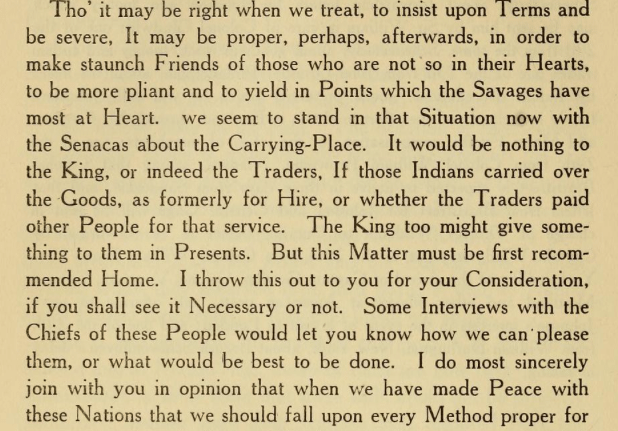
Such covert operations were common among the Six Nations when it came to their war with the British, and one great swing of the Ax would be necessary to defeat the British. Ergo; get them all in one place, at one time, and then every sovereign nation would enact the ambush, defeating the British once and for all. Pontiac’s rebellion was to be the start of driving the British into Scioto, a plan that would only manifest in 1774, after the Shawanese informant’s testimony was documented. This event became known as Lord Dunmore’s War, and it was not nearly as dramatic as it was meant to be. The Chenussios and their allies spent years preparing for this event, but after Sir William Johnson’s Treaty of Peace in April and August of 1764, the covert operation was all but abandoned. Only a few renegade nations were still on board with the plan, since the Senecas were the brains behind the operation. Without the Senecas, the alliance lost the Six Nations and many other strong allies, and their ability to perpetrate the execution of the British forces with one fall swoop of the Ax was extinguished.
The Ax, a metaphor for the covert operation, was instead turned against the Shawanese & Delaware by a small band of Chenussios who traveled to Fort Niagara in late July, 1764 to meet with Sir William Johnson and sign the (second) treaty in August. While Pontiac was taking refuge with the Chenussios, it was of utmost concern to Sir William Johnson that the Senecas would not make an appearance, as they had promised, at Fort Niagara in July. The Senecas arrived fashionably late, and were reprimanded by Sir William Johnson. Their reply was interesting, to say the least; “…altho we have [ ] as yet had time to draw our breath, being but just [arrived] first if you consider that we have few or no old Sachims qua[li]fied to transact business of this importance, you will ye readier excuse our delay, we are however now prepared to fulfill our promises made to You last Spring, & make peace on a Solid & lasting footing.” These transcripts, from Sir William Johnson’s own account with the Chenussios at Fort Niagara on August 1st, 1764, are quite revealing. First, what we see is this: The purpose of the second treaty in August was to solidify the promises made by the Senecas in the first treaty of April. If you recall, the Senecas sent messengers to the meeting of the first treaty, and ultimately Sir William Johnson did not feel that their representatives were properly suited to sign a treaty for the Chenussios. He ordered them to return with Chiefs or Sachems who actually had the power to sign the treaty. When they did return, these young warriors openly admitted that they were there without proper representation, but that they were eager to sign the treaty regardless. They then told Johnson to give them until the next morning to deliberate on their proceedings. In the same breath, the young Seneca detractors told Sir William Johnson, “ …the Six Nations Sent to Collect all their People from them parts, on their taking up ye Ax against ye Shawanese & Delawares. They say the Delawares begged of them to make peace for them…” It appears as though the representatives from the Seneca Nation at Fort Niagara in August of 1764 had their own plans, to take arms against Pontiac and side with the British, albeit without official authorization by their Chiefs or Sachems. It appears that the Chiefs who were present among the Senecas in August were the three who were left hostage to Sir William Johnson back in April…
THE SENECAS LOSE THE ISLANDS OF NIAGARA
On August 6th, 1764, the Treaty of Peace is signed by the Seneca Nation. The Chiefs who signed the treaty on behalf of the Seneca Nation were hostages, and because of this fact: This treaty does not have to be recognized by the current Seneca government; and under the Stimson Doctrine, this treaty must not be recognized by the United States Government, as the Stimson Doctrine is a federal policy that explicitly states that the United States government will not recognize any territorial changes that were produced by force.
The August treaty is almost identical to the April treaty, only this version was revised to include the islands on the Niagara River (Grand Island, Goat Island, and Three Sisters Islands among them). What is highly suspect about this is that Sir William Johnson claims that the Senecas begged him to accept the gift of the islands, for all of the trouble that they had caused him. In his own words, he tells us that he did not wish to offend the Senecas by refusing their generous gift, and so he accepted the islands on behalf of the Crown. What’s really strange about the wording of the treaty is this: “In Addition to the Grant made by the Chenussi- os Deputies to his Majesty at Johnson Hall, last April, of the Lands from Fort Niagara to the upper end of the Carrying Place beyond Fort Schlosser, and four Miles in breadth on each side of the River, the Chenussios now surrender up all the Lands from the upper end of the former Grant, (and of the same Breadth) to the Rapids at Lake Erie, to his Majesty for his sole use, and that of the Garrison, but not as a private property, it being near some of their Hunting Grounds, so that all that Tract of the breadth before mentioned from Lake Ontario to Lake Erie shall become vested in the Crown in manner as before mentioned, excepting the Islands between the Great Falls and the Rapids which the Chenussios bestow upon Sir William Johnson as a Proof of their Regard, and of their knowledge of the trouble he has had with them from time to time. All which the Chenussios hope will be acceptable to his Majesty and that they may have some Token of his Favor.”
It is critical to point out purpose for which the Senecas used the islands, which are now known to us as Goat Island and Three Sisters Islands: Both were sacred land and both were used for prayer and as ceremonial burial grounds for the most cherished members of the Seneca Nation; chiefs, great warriors and shaman (among others). The proximity of the most remote of the Three Sisters Islands, known today as Celinda Eliza, to the Horseshoe Falls, makes it the closest one can get to these rapids while still standing on land. Given their belief that the thunder gods lived behind this waterfall, it’s clear as to why ritualistic offerings were made on this sacred island, and also as to why the most highly esteemed graves were reserved for Celinda Eliza.
Why, then, would the Senecas agree to the additional, revised terms of the treaty, banning the use of the land at Niagara for private property… and then give Sir William Johnson, an outsider, their most sacred land for his own personal use? To the Senecas, all land was sacred; Their hunting grounds were sacred, and so they banned the use of the land for private property. Would they not also ban the use of their most sacred islands for private property; those islands which were used for burials and rituals to their gods? The Senecas believed that Goat Island and Three Sisters Islands were pathways to the home of the thunder gods, yet according to Johnson, this most generous gift was made in order to make wrong for the Devil’s Hole Massacre; and other trouble they had caused. However, the islands were exempted from the original version of the treaty, signed in April of 1764 (before the Chiefs were hostages). Sir William Johnson, being a shrewd strategist, knew of the importance of the islands in securing what was known at the time as the “Carrying Place”, a portage where goods were transported to and from Fort Niagara via the Niagara River. Johnson also knew of the islands’ significance to the spiritual beliefs of the Senecas, and Johnson hated the Senecas. It being against His Majesty’s law for Johnson to accept the gift, he immediately turned the islands over as property of the Crown. Johnson’s snide remarks in his letters of how he couldn’t refuse the offer that the Indians had made without offending them, plainly shows the arrogance of his egotistical ways. He was awfully proud of himself for securing the sacred islands which the Chenussios would die before handing over. Johnson knew that he had outwitted the Indians in a most dishonest fashion.
What happened next is possibly even stranger; After the 1764 Treaty of Peace was signed by the Senecas, a British officer named John Stedman built a home on Goat Island. Stedman was one of only two survivors of the Devil’s Hole Massacre, and he claimed that the Senecas actually gifted the islands to him (and not Sir William Johnson) at the signing of the treaty. He became somewhat of a folk hero among the British and colonists due to his flight from the massacre (he ran 5 miles to safety from the Niagara Gorge to Fort Niagara). When New York State seized ownership of the islands around 1801, Stedman’s relatives sued the state in an attempt to reclaim the land. There was no official title or deed to the islands, and New York State eventually evicted Stedman’s estate from Goat Island. New York State then paid the Senecas for the islands in 1815, although this was contested by the Seneca Nation under the Intercourse Act in 1993 . It’s clear, given the above evidence, that the Crown never owned the islands to begin with, and as such, neither did New York State. This would explain why Jasper Parrish urged the state to purchase the islands from the Seneca Nation.
Sometime in the early 1800’s, New York State dug up the Seneca graves from Goat Island and Three Sisters Islands, and in 1834 one of the bodies was displayed in a museum at the Boston Medical College. In 2013, New York State desecrated the island known as Celinda Eliza, fanning the flames of racial negligence in this historical struggle.
According to Peter Porter and other historical accounts, Sir William Johnson obtained the islands by threatening force. Any treaty that is entered into under duress is null and void, and if this is true, as other historical accounts have claimed, the Niagara islands still legally and rightly belong to the Seneca Nation today. In 2002, the Grand Island land-claim case ended with the Seneca Nation using it as leverage to sign the exclusivity gaming compact with New York State. Now that the Seneca Nation is preparing for arbitration once again, centering around the exact same gaming compact, the Grand Island case should be revisited because the islands of the Niagara River are a package deal. Coincidentally, the Niagara Falls State Park sits atop Goat Island and Three Sisters Island. The state park produces hundreds of millions of dollars in revenue each year for the state, and will likely be used as leverage by the Seneca Nation in this round of arbitration (considering Governor Cuomo’s recent investment of millions of dollars into the state park).
After reading through countless pages of Sir William Johnson’s notes, I believe that the addition of the islands in the August treaty was a way for Johnson to unethically obtain sacred land for a complete monopoly of the Carrying Place. Johnson needed the islands in order to secure the Niagara portage, and he knew full well that the Chenussios would never give anyone, native or non-native, their most sacred land. One must ponder whether at the time of the addition of the islands to the treaty, if this alteration was even revealed to the Senecas. Keep in mind that the Senecas did not read or write English, and they signed the treaty by drawing pictures of animals representing their clans. It is at the very least plausible to think that Johnson, in an attempt to smother Pontiac’s rebellion and the covert Ax operation, would hold the Senecas hostage by taking their land.
The truth is that the 1764 Treaty of Peace was not actually a treaty, and the Chenussios were among the very few who could see that. The treaty was in actuality a surrendering of almost all of the great sovereign nations of Turtle Island. The majority of these nations entered into the agreement believing that they would be made full partners and friends of the British. Many of these nations looked at the influential Senecas involvement in the treaty as a symbol of peace. The people of the Six Nations held to their word, and the news traveled to the Chenussios that their sacred land was given to the Crown. It’s obvious that the frustrated Seneca Nation did not want to ignite another war and risk appearing to the other nations, as having gone back on their word. Whether the Senecas who actually signed the treaty were outcasts or betrayers to their own… is unknown. Whether the Senecas actually gifted the islands to Johnson or Stedman, or didn’t gift the islands at all… is unknown. (UPDATE: This author has confirmed with a knowledgeable Seneca historian that John Stedman was given the land, including the islands, which his estate claimed that he owned. Although there was no real “deed”, as Natives did not have deeds to their land, the situation was as follows: When the Senecas ambushed the British caravan at Devil’s Hole, they lined up the hostages along the gorge and told them that they were going to be pushed in the hole and fired upon. Anyone who survived this treacherous event would be given the land around them. John Stedman, after somehow surviving the Devil’s Hole Massacre, was later looked upon by the Senecas as a very special, respected man.)
What can be confirmed by firsthand evidence, and is the key to this entire argument, is this:
On November 3rd, 1764, just three months after the Seneca treaty, Sir William Johnson wrote this letter to his colleague and friend Cadwallader Colden. It seems that Colden, who was back in Britain, had informed Johnson in a previous letter that some of their British colleagues back home were beginning to question Johnson’s involvement with the Indians and allegiance to the Crown. In his letter, Johnson assures Colden that, “if necessary I can easily let them know the impropriety of my endeavoring to persuade the Indians to Submit to a Claim which I know to be unjust, and which the Indians are resolved to oppose.”
In Johnson’s own words, he lied to the Indians. He is a self-admitted liar, and his reasoning behind his betrayal of trust to the people of the First Nations is simple: He knew that the Indians would not submit to a claim which Johnson himself knew to be unjust. A claim such as the Senecas gift of their most sacred burial grounds and islands on which they worshipped their gods.
CONCLUSION
As a Niagarian, I have great admiration for the Haudenosaunee and all other indigenous cultures. However, I have not fabricated any of the facts contained within this report and as it stands, this deserves a serious investigation under the scrutiny of the trained eyes of an unbiased historian. All of what I’ve noted above can be verified in the sources listed at the end of this report. In my opinion, it is crystal clear that the islands in the Niagara River belong, as they have for centuries, to the Chenussio/Seneca Nation. At the start, I merely researched the courtroom proceedings from the 1993 Grand Island land claim case and found that the entire case truly hinged on the August 1764 Treaty of Peace. Upon digging for the treaty, I came across many historical documents which peaked my interest and, after reading through many of Sir William Johnson’s letters, my intuition began to tell me that something wasn’t right – that history was somehow re-written.
History is written by the victors, and wars are not always won simply through violence. Often it is by the cunning and deceit of a highly intelligent leader such as Sir William Johnson that the tides of society are shifted greatly, and sometimes it is only by the loss of translation and lack of historical records that some of the most intriguing events in our history are changed to suit the current narrative; as such, I believe this to be the case in regards to New York State’s current “ownership” of the islands of the Niagara River. I have often wondered how students in Japan are given lessons in history when they reach the chapters in their textbooks that pertain to World War II. Are they forced to accept the idea that their ancestors were the bad guys, or are there two sides to every story that the educational system in the United States avoids teaching, because it would result in the cultivation of free-thinkers who question the system? Whatever the case may be, after reading the historical documents and supporting articles for myself, I have drawn the conclusion contained within this report by my own free will.
Sincerely,
Ken Cosentino
SOURCES
Sir William Johnson’s letters: https://archive.org/stream/papersofsirwilli04john#page/504/mode/2up
Transcript of the Treaty of Peace (1764): https://archive.org/stream/documentsrelativ09newy#page/652/mode/2up/search/seneca
Scan of the Treaty of Peace (1764): https://www.mainememory.net/media/pdf/8895.pdf
Documents Relative to the Colonial History of the State of New York: https://books.google.com/books?id=7GlBAQAAMAAJ&pg=PA367&lpg=PA367&dq=who+are+the+chenussios&source=bl&ots=n8QYHVvLiI&sig=psEuJ-1tF-gC3oHpV1wYVtIbtto&hl=en&sa=X&ved=0ahUKEwjP55K_uLDWAhWC5IMKHWLdDJsQ6AEILjAC#v=onepage&q=chenussios&f=false
Journal of the New York State Senate (1816) regarding Stedman’s land claim: https://books.google.com/books?id=9fBBAQAAMAAJ&pg=RA2-PA559&lpg=RA2-PA559&dq=john+stedman+journals+1764&source=bl&ots=h8n7p5cfuu&sig=HUsuraxtq7NZflRGsjKlL2XjFn4&hl=en&sa=X&ved=0ahUKEwjzxo3ErLDWAhWC7SYKHXWUCpQQ6AEINTAC#v=onepage&q=john%20stedman%20journals%201764&f=false
Excerpts from the historical documents cited:
Tweet

